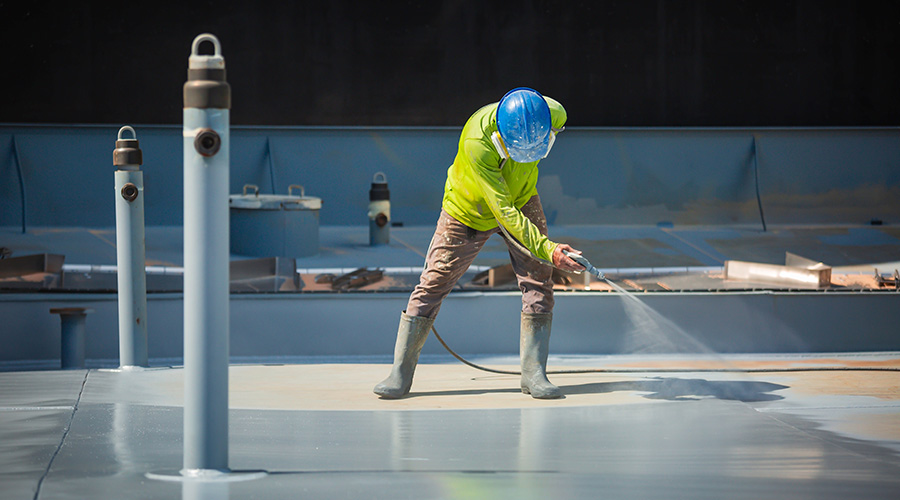Concrete Coatings: Repairing and Preparing for Success
Part one of a five-part article on concrete coatings
Ensuring the long-term performance of concrete surfaces goes far beyond laying the materials and letting them do their jobs. The challenge of properly specifying, installing and maintaining concrete components starts well before the project begins and continues for years and, ideally, decades. Central to success is understanding the nature of concrete.
“I kind of think of concrete as a living, breathing thing,” says Scott Lancz with Rust-Oleum. “Concrete technically never stops curing.”
Given this scenario, maintenance and engineering managers and their staffs must be equipped to handle the changes and challenges that will arise.
One group of important resources in their efforts are concrete coatings. The coatings are formulated to protect concrete surfaces and components from water damage, cracking, erosion and weather.
To extend the performance lives of these surfaces, managers need to develop a comprehensive plan that addresses key issues related to the use of concrete coatings.
Along the way, coatings manufacturers and suppliers can offer resources, insights and guidance to help managers make smart decisions.
Before coating application can begin, workers need to understand the state of concrete slabs and walls to ensure the surface is as ready as possible to receive the application.
“I like to think surface prep is about 90 percent proper application,” says Rick Watson of Sherwin-Williams. “Improperly prepared surfaces can result in reduced coating integrity and service life. Up to 80 percent of the complaints or failures can be directly attributed to inadequate surface preparation I can’t stress enough that preparation is critical.”
The condition of concrete before the application will go a long way in determining a project’s success because coatings will not work as intended if surfaces are dirty or show signs of failure before application.
“Concrete is a very durable surface, but you want to make sure it is in good condition,” says Quenton Roehricht with Kilz. “There’s not going to be a coating that’s going to be a fix-all if you have problems. You want to make sure the concrete is structurally sound and ready for coating. That is the most important thing you’re going to get into when you’re affecting the condition of the concrete surface.”
One of the biggest challenges workers face when preparing concrete for a coating application is repairing cracks and waterproofing. If workers neglect to address the problem in a timely fashion, it might mean future catastrophic problems.
“Any opening, crack or crevice in concrete needs to be filled, sealed or patched,” Watson says. “You have to button it up so water is not going to get in. It’s a no-brainer approach. You allow water in because you didn’t repair a hole or crack, (and) so many things can go wrong. Water takes the path of least resistance, so it can go just about anywhere and do damage.”
When using a caulk or coating to repair a crack, workers must make sure the crack is no longer expanding.
“The important thing is making sure it has stopped moving,” Lancz says. “There are different kinds of cracks. One is a static crack, which means it’s already stopped. A dynamic crack means it’s going to consistently keep moving. The main identifier is a heave between the two sides, meaning one side is higher than the other.”
Coatings will not repair structural cracks, which signal a flaw in the structure. For non-structural cracks 1⁄16 inch wide or larger, managers might consider specifying products such as hydraulic cement or a concrete compound. For smaller cracks, however, using a coating is an option.
“When you’re looking at less than a 1⁄16 inch-long crack, you’re looking at a shrinkage crack or a spider crack, where maybe the concrete cured quicker than expected and looks like a spider web,” Roehricht says. “An elastomeric coating will help bridge those cracks and take any of the unsightliness out of it for you.”
Related Topics:

















